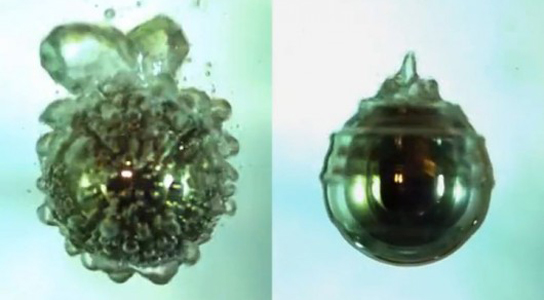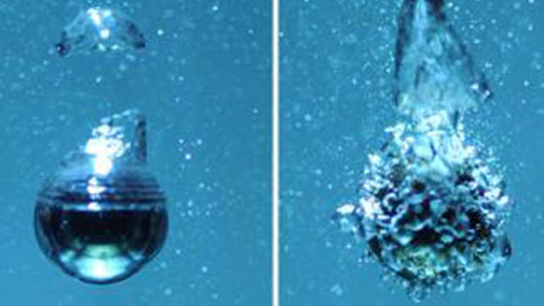Superhydrophobic Coating Allows Boiling Water without the Creation of Bubbles
September 14, 2012

Water can be made to boil without any bubbling if a boiling surface is specifically treated so that the vapor cushion does not break down. This is linked to the Leidenfrost effect.
The scientists published their findings in the journal Nature. The surface needs to be very water-repellent and the effect might be used to carefully control how metals are cooled down and heated, or to reduce the drag on ships.

Superhydrophobic spheres were created by coating them with a commercially available product that made the surface rough and strongly water-repellent. They were heated to 400 °C. Over this temperature, the coating would deteriorate.
The hot spheres were dropped into water at room temperature. A layer of water vapor formed around it, and it was kept there as they cooled down, with no explosive boiling or bubbling.
The result in itself was dramatic and somewhat unexpected. This phenomenon could be used to reduce the drag on surfaces, such as the tiny channels in microfluidic devices.
The next step involves creating vapor layers at much lower temperatures than the boiling point of water. A surface could be designed that would make this vapor state more stable. If this could be formed around a ship, it would discourage barnacles and algae from attaching themselves.
No comments:
Post a Comment